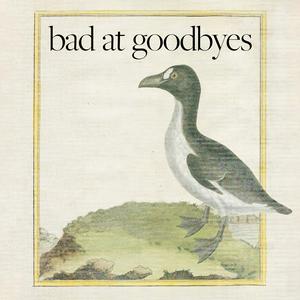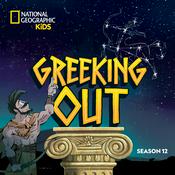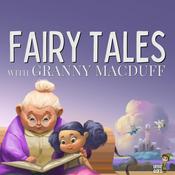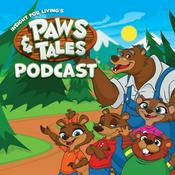Available Episodes
5 of 64
- On holiday break until JanuaryWe're on a short holiday break. New episodes return in January 2026. Thanks for listening!--------0:30
- Mulanje CedarMulanje Cedar :: Widdringtonia whyteiBad at Goodbyes :: Episode 062On today’s show we learn about the Mulanje Cedar, a critically endangered conifer tree native to the African nation of Malawi, specifically to Mount Mulanje in the southeast.(00:05) Intro(02:05) Species Information(23:53) Citations(25:52) Music(32:02) PledgeFor more information about Mount Mulanje conservation, please see the Mulanje Mountain Conservation Trust at https://mountmulanje.org.mwResearch for today’s show was compiled from:Bayliss, Julian, Steve Makungwa, Joy Hecht, David Nangoma, and Carl Bruessow. “Saving the Island in the Sky: The Plight of the Mount Mulanje Cedar Widdringtonia Whytei in Malawi.” Oryx 41, no. 1 (2007): 64–69. – https://doi.org/10.1017/S0030605307001548Burger, Niel. “Disturbance ecology and size-class structure of the Mulanje cedar of Malawi, Widdringtonia whytei, and associated broadleaved forest.” Botany honours project 2010. University of Cape Town. – http://hdl.handle.net/11427/24397Chanyenga, Tembo F., Coert J. Geldenhuys, and Gudeta W. Sileshi. “Effect of Population Size, Tree Diameter and Crown Position on Viable Seed Output per Cone of the Tropical Conifer Widdringtonia Whytei in Malawi.” Journal of Tropical Ecology 27, no. 5 (2011): 515–20. – https://doi.org/10.1017/S0266467411000204Chanyenga, T., Shaw, K. & Mitole, I. 2019. “Widdringtonia whytei.” The IUCN Red List of Threatened Species 2019: e.T33216A126090798. – https://dx.doi.org/10.2305/IUCN.UK.2019-3.RLTS.T33216A126090798.enCNN. “Saving Malawi’s Mulanje Cedar.” October 2025. Inside Africa S21 E21. – https://www.youtube.com/watch?v=sTNGckdP7kkEarle, Christopher J., ed. "Widdringtonia whytei." The Gymnosperm Database. February 10, 2025. – https://conifers.org/cu/Widdringtonia_whytei.php.Farjon, A. 2019. “Widdringtonia whytei.” Threatened Conifers of The World – https://threatenedconifers.rbge.org.uk/conifers/widdringtonia-whyteiFrank, Fred & Mwabumba, Lusayo & Mhango, Jarret & Missanjo, Edward & Kadzuwa, Henry & Likoswe, Michael. (2023). “Genetic and Phenotypic Parameters for Growth Traits of Widdringtonia whytei-Rendle Translocation Provenance Trials in Malawi.” Journal of Global Ecology and Environment. Volume 17, Issue 4. 32-48. – https://doi.org/10.56557/jogee/2023/v17i48222Martin, Emma, and Burgess, Neil. "Mulanje Montane Forest-Grassland." One Earth. September 23, 2020. – https://www.oneearth.org/ecoregions/mulanje-montane-forest-grasslandMitrani, Leila. 2017. “Reproduction and establishment of two endangered African cedars, Widdringtonia cedarbergensis and...--------34:03
- Corsican BatCorsican Bat :: Myotis NustraleBad at Goodbyes :: Episode 061On today’s show we learn about the Corsican Bat, a critically endangered flying mammal native to the French island territory of Corsica in the Mediterranean Ocean.(00:05) Intro(02:05) Species Information(30:46) Citations(32:42) Music(40:26) PledgeFor more information about Corsican Bat conservation see the Corsica Bat Group, in French: Groupe Chiroptères Corse at https://chauvesouriscorse.frBig thanks and deep gratitude to Kate Derrick at the Corsica Bat Group for sharing her expertise, insights and her work with us. It was so inspiring to speak with her.Research for today’s show was compiled from:Aulagnier, S., Beuneux, G. & Russo, D. 2024. Myotis nustrale. The IUCN Red List of Threatened Species 2024: e.T248107314A248107503. – https://dx.doi.org/10.2305/IUCN.UK.2024-2.RLTS.T248107314A248107503.enDerrick, K. Groupe Chiroptères Corse (Community Manager, Communications Manager, Scientific Officer). Interview by Joshua Dumas, October 30, 2025Derrick, K. and Beuneux, G. 2024. L’espèce endémique de Corse, Myotis nustrale, enfin décrite officiellement ! Envol des Chiros 36: 12-13. – https://www.sfepm.org/sites/default/files/inline-files/EDC36.pdfGroupe chiroptères Corse, 2019 - Programme d'étude concernant l'amélioration des connaissances sur l'écologie d'une nouvelle espèce de chauve-souris endémique à la Corse : Myotis sp. C (ex - Myotis nattereri) - Année 2018 – https://gaia.oec.fr/documents/39037ba8a97630e6c387281c39766ece.pdfJavier Juste, Manuel Ruedi, Sébastien J. Puechmaille, Irene Salicini, Carlos Ibáñez "Two New Cryptic Bat Species within the Myotis nattereri Species Complex (Vespertilionidae, Chiroptera) from the Western Palaearctic," Acta Chiropterologica, 20(2), 285-300, (14 February 2019) – https://doi.org/10.3161/15081109ACC2018.20.2.001Martinetti, Jean-Michel dir. Belle de Nuit. France 3 Corse ViaStella and Mediterranean Dream Productions, 2024. 52 min – https://www.france.tv/france-3/corse-viastella/corsica-salvatica/6717952-regards-croises-sur-le-monde-animal.htmlOffice de l'Environnement de la Corse. Faune Sauvage de Corse. Murin de Corse. – https://faunesauvagedecorse.oec.fr/Espece_mpage_224_idtaxon,4905.htmOne Earth – https://www.oneearth.org/ecoregions/corsican-montane-broadleaf-and-mixed-forests/Schmidbauer, P., & Denzinger, A. (2019). Social calls of Myotis nattereri during swarming: Call structure mirrors the different behavioral context. PloS one, 14(9), e0221792. –--------42:24ErubiaErubia :: Solanum ensifoliumBad at Goodbyes :: Episode 060On today’s show we learn about the Erubia, a critically endangered flowering shrub native to the US island territory of Puerto Rico in the Caribbean Sea.(00:05) Intro(02:05) Species Information(19:24) Citations(21:02) Music(26:42) PledgeFor more information about conservation in Puerto Rico, please visit Para la Naturaleza at https://paralanaturaleza.orgResearch for today’s show was compiled from:Eastern Connecticut State University – https://www.easternct.edu/news/_stories-and-releases/2025/01-january/easterns-greenhouse-is-a-sanctuary-for-imperiled-plants.htmlGann, G.D. 2024. Solanum ensifolium. The IUCN Red List of Threatened Species 2024: e.T212065930A253642712. – https://dx.doi.org/10.2305/IUCN.UK.2024-2.RLTS.T212065930A253642712.enGraham, M.R., Kaur, N., Jones, C.S. et al. A phoenix in the greenhouse: characterization and phylogenomics of complete chloroplast genomes sheds light on the putatively extinct-in-the-wild Solanum ensifolium (Solanaceae). BMC Plant Biology 25, 320 (2025). – https://doi.org/10.1186/s12870-025-06338-8The Institute for Regional Conservation – https://www.regionalconservation.org/ircs/database/plants/PlantPagePR.asp?TXCODE=SolaensiJankauski Mark, Ferguson Riggs, Russell Avery and Buchmann Stephen. 2022. Structural dynamics of real and modelled Solanum stamens: implications for pollen ejection by buzzing bees. Journal of the Royal Society Interface. Volume 19 Issue 188. 1920220040 – http://doi.org/10.1098/rsif.2022.0040National Science Foundation’s Solanaceae Source – https://solanaceaesource.myspecies.info/content/solanum-ensifoliumPascarella, John & Aide, T. Mitchell & Serrano, Mayra & Zimmerman, Jess. (2000). Land-Use History and Forest Regeneration in the Cayey Mountains, Puerto Rico. Ecosystems. 3. 217-228. – https://doi.org/10.1007/s100210000021Rosario, Lumariz Hernandez, Juan O. Rodríguez Padilla, Desiree Ramos Martínez, Alejandra Morales Grajales, Joel A. Mercado Reyes, Gabriel J. Veintidós Feliu, Benjamin Van Ee, and Dimuth Siritunga. "DNA Barcoding of the Solanaceae Family in Puerto Rico Including Endangered and Endemic Species." Journal of the American Society for Horticultural Science 144, no. 5 (2019): 363–374. – https://doi.org/10.21273/JASHS04735-19Strickland-Constable, R., Schneider, H., Ansell, S.W., Russell, S.J. and Knapp, S. (2010), Species identity in the Solanum bahamense species group (Solanaceae, Solanum subgenus Leptostemonum). Taxon. 59. 209-226. –--------28:47Chinese AlligatorChinese Alligator :: Alligator sinensisBad at Goodbyes :: Episode 059On today’s show we learn about the Chinese Alligator, critically endangered reptile native to the Yangtze River system in the Anhui Province of southeastern China.(00:05) Intro(02:05) Species Information(29:21) Citations(31:12) Music(38:25) PledgeFor more information about Chinese Alligator conservation, see the IUCN-SSC Crocodile Specialist Group at https://www.iucncsg.org.Research for today’s show was compiled from:Encyclopedia Britannica – https://www.britannica.com/animal/Chinese-alligatorGroppi, L. 2006. "Alligator sinensis" (On-line), Animal Diversity Web. – https://animaldiversity.org/accounts/Alligator_sinensis/Jiang, H.-X. & Wu, X. 2018. Alligator sinensis. The IUCN Red List of Threatened Species 2018: e.T867A3146005. - https://dx.doi.org/10.2305/IUCN.UK.2018-1.RLTS.T867A3146005.enKabir, Ashraful. Chinese Alligator (Alligator sinensis) (Fauvel, 1879) (Reptilia: Alligatoridae): Captive Breeding as Well as its Rehabilitation. International Journal of Research Studies in Zoology. Volume 8, Issue 2, 2024, PP 5-8. – https://doi.org/10.20431/2454-941X.0802002Lau, Erika Y. X., Josh A. Hodge, Jonathan P. Rio, Tao Pan, Philip D. Mannion, and Samuel T. Turvey. “Using Local Ecological Knowledge to Identify Land-Use Threats to the Last Wild Population of the Chinese Alligator Alligator Sinensis.” Oryx, 21 February 2025, 1–10. – https://doi.org/10.1017/S0030605324000978Liu, V. H. (2013). Chinese Alligators: Observations at Changxing Nature Reserve & Breeding Center. Reptiles & Amphibians, 20(4), 172-183. – https://doi.org/10.17161/randa.v20i4.13965Smithsonian's National Zoo and Conservation Biology Institute. (n.d.). Chinese alligator. – https://nationalzoo.si.edu/animals/chinese-alligatorSun, K., Li, M., Wang, Z., Sun, S., Yang, J., Wu, X., & Pan, T. (2025). Habitat Integrity Challenges for the Chinese Alligator Amid Land Occupation by Human: Pathways for Protection. Ecology and Evolution, 15 (3), e71113. – https://doi.org/10.1002/ece3.71113Thorbjarnarson, John, and Wang Xiaoming. “The Conservation Status of the Chinese Alligator.” Oryx 33, no. 2 (1999): 152–59. – https://doi.org/10.1046/j.1365-3008.1999.00051.xThorbjarnarson, John & Wang, Xiaoming & He, Lijun. (2001). Reproductive Ecology of the Chinese Alligator (Alligator sinensis) and Implications for Conservation. Journal of Herpetology. 35 (4). 553. – https://doi.org/10.2307/1565892Xianyan Wang, Ding Wang, Xiaobing Wu, Renping Wang,...--------40:19
More Kids & Family podcasts
Trending Kids & Family podcasts
About Bad at Goodbyes
On Bad At Goodbyes, we offer a calm, clear-eyed, creative look at plants and animals from the IUCN Critically Endangered Red List. Research-based, we share species details, behaviors, habitat, and conservation information. And then at the end of each show we perform an ambient soundscape, to hold space for contemplation, delight, awe and perhaps grief. Without dedicated conservation action, some of these species will not survive the 21st century. And so, though listening and learning, perhaps we might acknowledge that journey with a moment of our attention, in recognition of our kinship. Thanks for listening.Podcast websiteListen to Bad at Goodbyes, Deep Sleep Sounds and many other podcasts from around the world with the radio.net app

Get the free radio.net app
- Stations and podcasts to bookmark
- Stream via Wi-Fi or Bluetooth
- Supports Carplay & Android Auto
- Many other app features
Get the free radio.net app
- Stations and podcasts to bookmark
- Stream via Wi-Fi or Bluetooth
- Supports Carplay & Android Auto
- Many other app features


Bad at Goodbyes
Scan code,
download the app,
start listening.







































